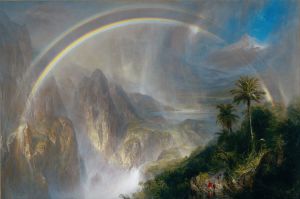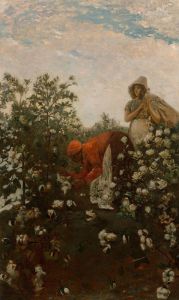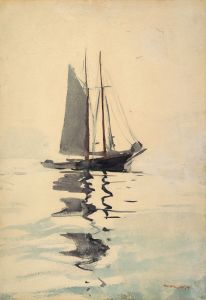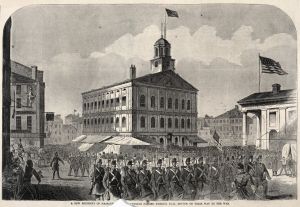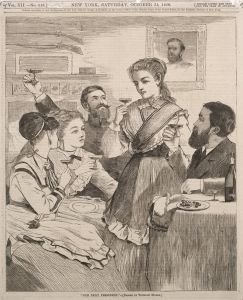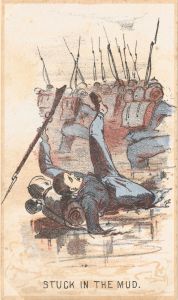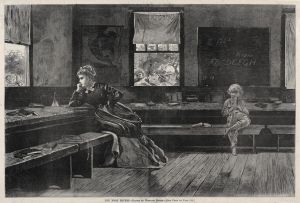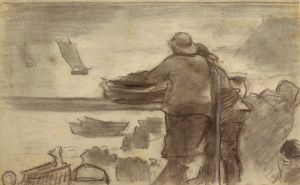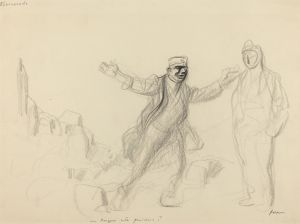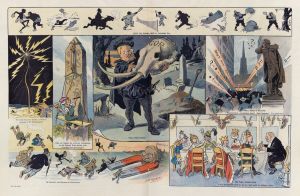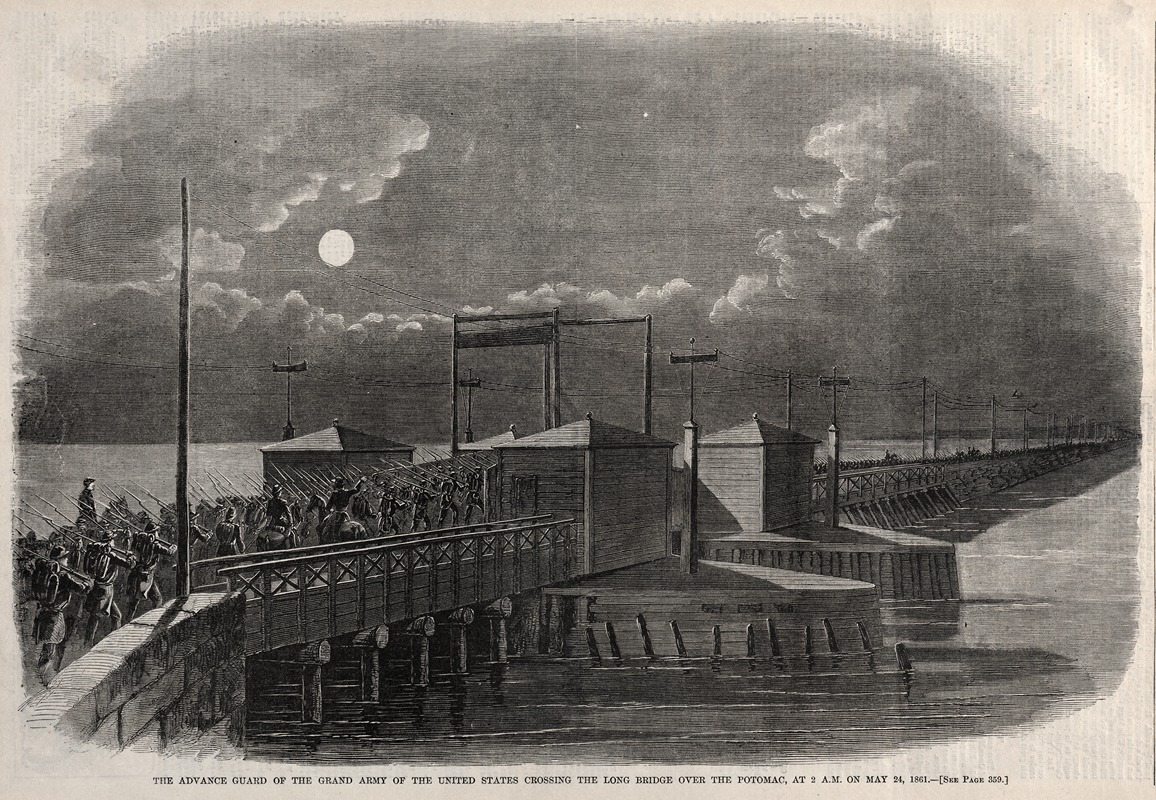
The Advance Guard of the Grand Army of the United States Crossing the Long Bridge over the Potomac, at 2 a.m. on May 24, 1861
A hand-painted replica of Winslow Homer’s masterpiece The Advance Guard of the Grand Army of the United States Crossing the Long Bridge over the Potomac, at 2 a.m. on May 24, 1861, meticulously crafted by professional artists to capture the true essence of the original. Each piece is created with museum-quality canvas and rare mineral pigments, carefully painted by experienced artists with delicate brushstrokes and rich, layered colors to perfectly recreate the texture of the original artwork. Unlike machine-printed reproductions, this hand-painted version brings the painting to life, infused with the artist’s emotions and skill in every stroke. Whether for personal collection or home decoration, it instantly elevates the artistic atmosphere of any space.
"The Advance Guard of the Grand Army of the United States Crossing the Long Bridge over the Potomac, at 2 a.m. on May 24, 1861" is an artwork by the renowned American artist Winslow Homer. This piece captures a significant moment during the early days of the American Civil War, specifically focusing on the Union Army's movement into Virginia. The painting is notable for its historical context and the way it encapsulates the tension and anticipation of the time.
Winslow Homer, born in 1836, was an American landscape painter and printmaker, best known for his marine subjects. He is considered one of the foremost painters in 19th-century America and a preeminent figure in American art. Homer's work often depicted scenes of American life and landscapes, and he had a unique ability to convey the mood and atmosphere of his subjects.
The artwork in question illustrates the Union Army's advance into Confederate territory. On May 24, 1861, just one day after Virginia's secession from the Union was ratified, Union troops crossed the Potomac River via the Long Bridge, moving from Washington, D.C., into Virginia. This strategic maneuver aimed to secure the capital and prevent Confederate forces from threatening Washington. The crossing marked the beginning of the Union's military operations in Virginia, which would become a central theater of the Civil War.
Homer's depiction of this event is significant not only for its historical value but also for its artistic qualities. The painting captures the early morning hours, with soldiers marching in formation across the bridge. The use of light and shadow in the artwork conveys the somber and serious nature of the military operation. The scene is likely filled with a sense of urgency and determination, reflecting the gravity of the situation as the nation was on the brink of a prolonged and bloody conflict.
While the painting itself is a powerful representation of this moment in history, it is also important to note that Winslow Homer was primarily known for his work as an illustrator during the Civil War. He contributed illustrations to publications such as Harper's Weekly, which provided the public with visual accounts of the war. These illustrations were crucial in shaping public perception and understanding of the conflict.
Homer's ability to capture the essence of a scene, whether through painting or illustration, made his work highly influential. His Civil War pieces, including "The Advance Guard of the Grand Army of the United States Crossing the Long Bridge over the Potomac," offer valuable insights into the experiences and emotions of those involved in the war.
In summary, Winslow Homer's artwork serves as a poignant reminder of the early days of the American Civil War and the Union Army's efforts to secure the nation's capital. Through his depiction of the Union troops crossing the Long Bridge, Homer provides a window into a pivotal moment in American history, characterized by uncertainty and the looming challenges of a nation divided.






